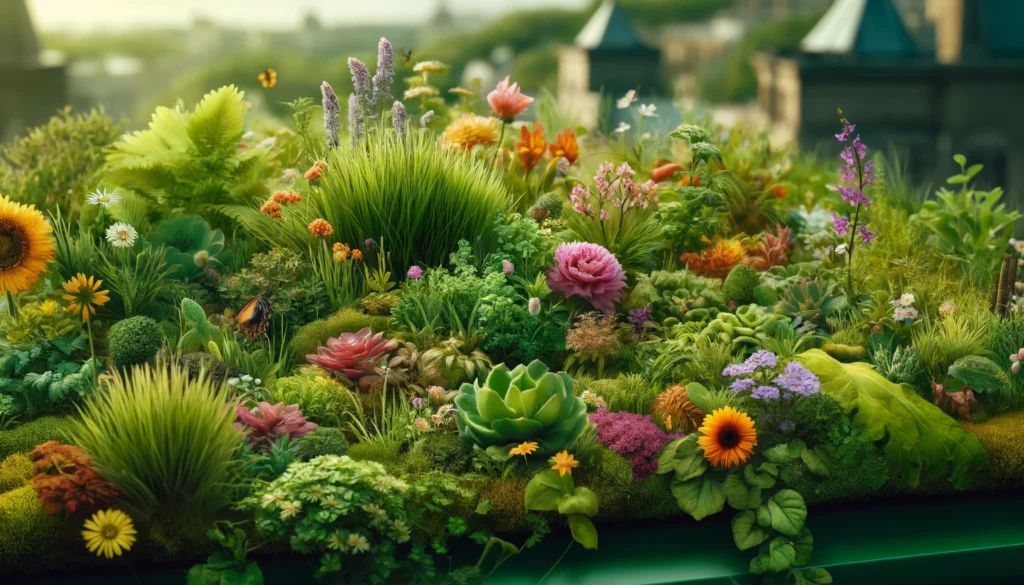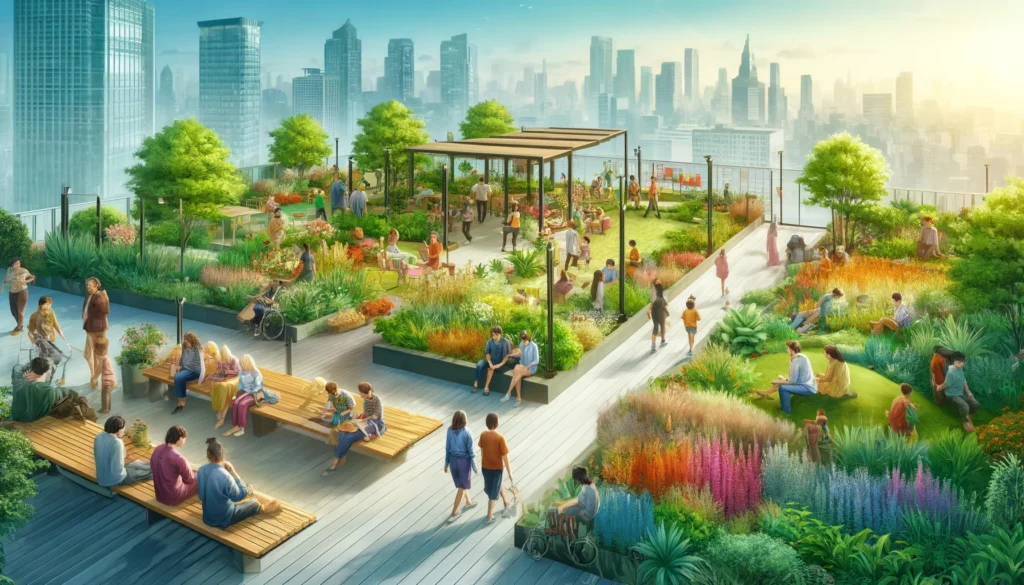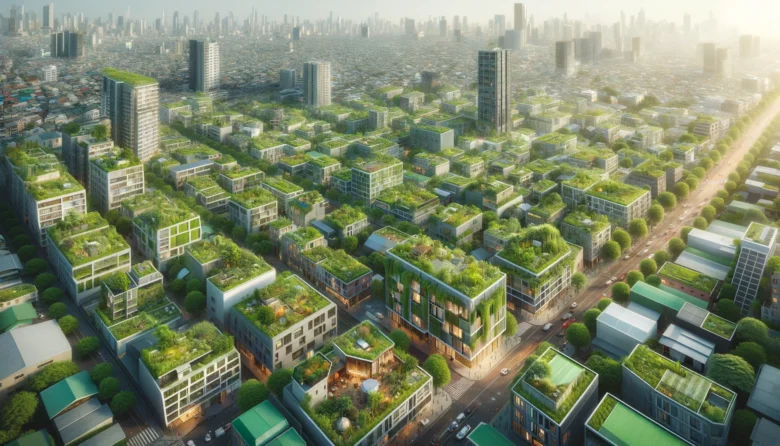Ever noticed how cities can feel like ovens in the summer? That’s the urban heat island (UHI) effect in action, where concrete jungles trap heat, making urban areas much warmer than their greener, rural counterparts. But there’s an exciting solution gaining traction: green roofs. Let’s explore how these lush, living rooftops are making a difference, especially in temperate climates.
Understanding the Urban Heat Island Effect
The urban heat island effect isn’t just a fancy term; it’s a real problem. Picture this: asphalt, concrete, and buildings soaking up the sun’s heat all day, then radiating it back out, turning cities into giant radiators. This extra heat can lead to increased energy consumption, health issues, and poor air and water quality. Not fun, right?
What Are Green Roofs?
So, what exactly are green roofs? Imagine turning the top of your building into a garden. That’s essentially what green roofs are. They come in two main types: extensive, which are lightweight and covered with hardy plants, and intensive, which are heavier and can support a variety of plants, even small trees. These roofs have several layers, including a waterproof membrane, drainage, a growing medium, and of course, the plants.

How Green Roofs Cool Urban Areas
Green roofs aren’t just about looking pretty. They play a big role in cooling cities. How? By reflecting sunlight, releasing water vapor through plants (a process called evapotranspiration), and insulating buildings to keep heat out. Studies have shown that green roofs can significantly reduce the temperature of rooftops compared to traditional roofs, cutting down on the heat radiated back into the city.
Real-World Success Stories
Let’s look at some real-world examples. In New York City, green roofs have been shown to lower rooftop temperatures by up to 50°F during peak summer. Toronto’s green roof bylaw has not only helped in cooling the city but also in managing stormwater. And in Berlin, green roofs are part of a broader strategy to make the city more resilient to climate change. The data speaks for itself: reduced temperatures and lower energy bills.
Beyond Cooling: Extra Benefits
But wait, there’s more! Green roofs don’t just cool things down. They improve air quality by filtering pollutants, manage stormwater by absorbing rain, enhance urban biodiversity by providing habitats for wildlife, and even boost property values. Plus, they make cities look more appealing and can improve our overall well-being.

Challenges and Considerations
Of course, it’s not all sunshine and roses. Installing a green roof can be pricey upfront, and they require some maintenance. Buildings need to be structurally sound to support the extra weight, and choosing the right plants is crucial for success. But with proper planning and community support, these challenges can be overcome.
Looking Ahead: The Future of Green Roofs
The future of green roofs looks bright, with advancements in materials and technology making them more efficient and accessible. Lightweight materials and smart irrigation systems are just a couple of innovations on the horizon. For urban planners and policymakers, promoting green roofs through incentives and integrating them into building codes can drive widespread adoption. And for all of us, spreading awareness and getting involved can make a big difference.
Conclusion
Green roofs are proving to be a powerful tool in combating the urban heat island effect, especially in temperate climates. They offer a multitude of benefits, from cooling cities to improving air quality and enhancing urban biodiversity. So, whether you’re a city planner, a building owner, or just someone who loves the idea of a greener city, green roofs are worth considering.

Author’s Note
Hey there! I hope you found this dive into green roofs as fascinating as I did. If you’re passionate about making our cities cooler and greener, green roofs might just be the way to go. Let’s keep exploring sustainable solutions together!
G.C., Ecosociosphere contributor.
Further Reading
- “Planting Green Roofs and Living Walls” by Nigel Dunnett and Noël Kingsbury – A practical guide on how to create green roofs and walls.
- “Rooftop Revolution: How Solar Power Can Save Our Economy—and Our Planet—from Dirty Energy” by Danny Kennedy – While focused on solar, this book also discusses the benefits of green infrastructure.




